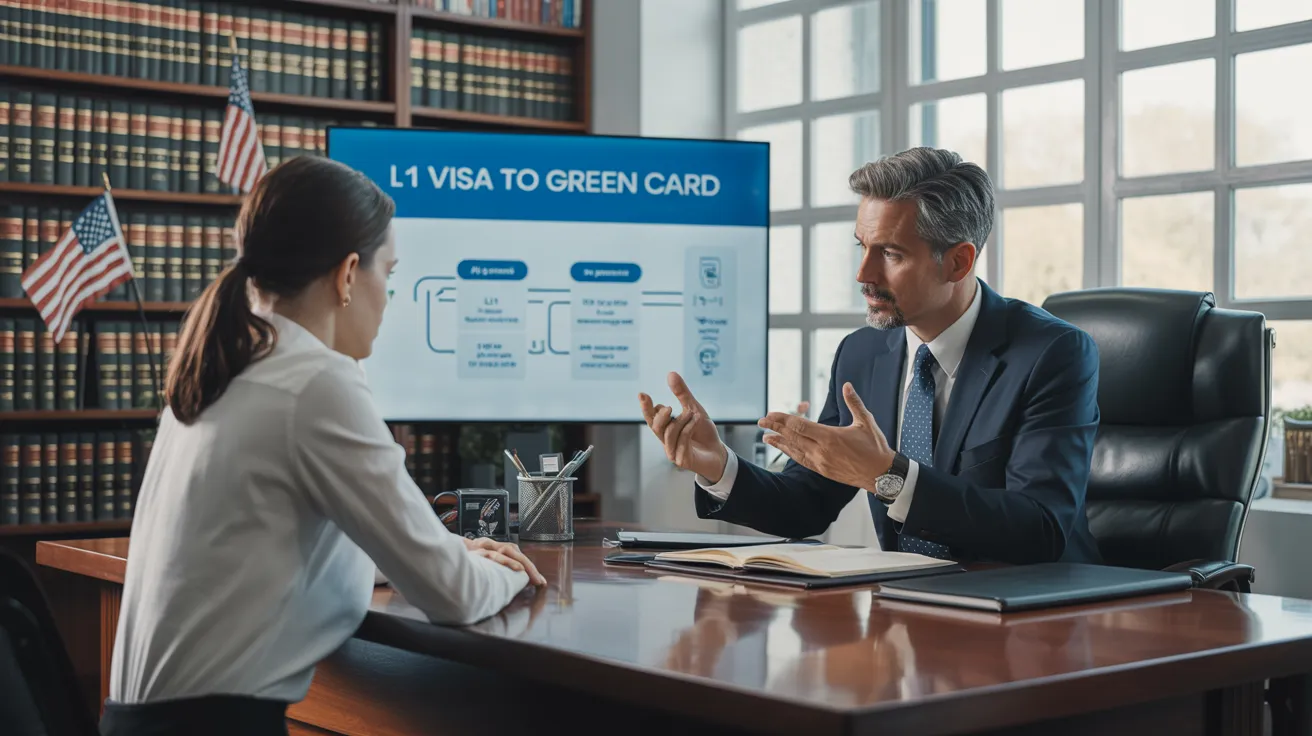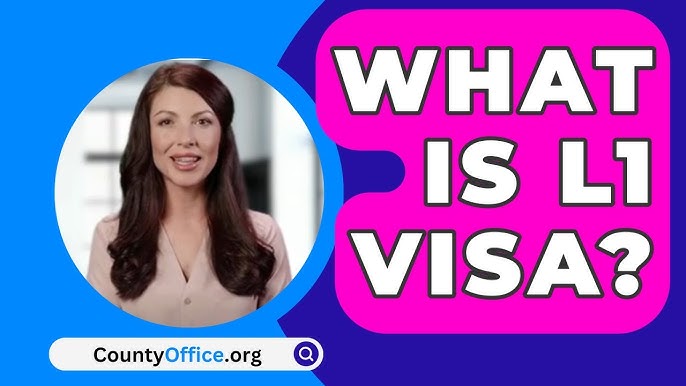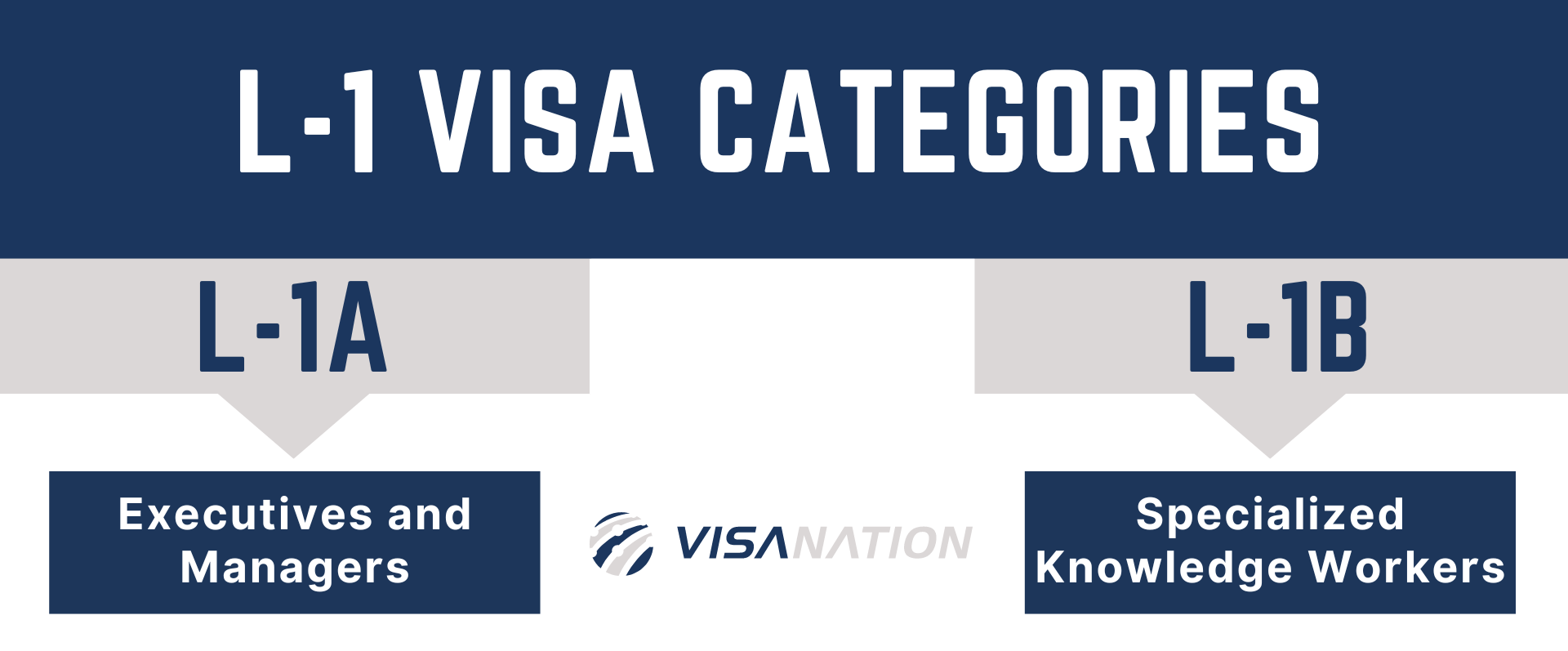Opening Opportunities: A Comprehensive Guide to the L1 Visa Process
The L1 visa procedure presents an essential path for multinational business looking for to move vital workers throughout boundaries. Understanding the nuances of eligibility criteria, the differences in between L-1A and L-1B visas, and the details of the application process can significantly influence a candidate's success. Nonetheless, navigating this complex landscape is not without its difficulties, and cautious attention to documents and company sponsorship is vital. As we discover the vital parts of this process, the strategies for getting over possible obstacles will certainly end up being evident, revealing just how informed prep work can open up a globe of opportunities.
Comprehending the L1 Visa
Comprehending the L1 visa entails recognizing its importance as an essential tool for multinational companies looking for to move skilled employees between global workplaces. This non-immigrant visa category assists in the movement of execs, managers, and specialized understanding employees to the United States, thereby making it possible for companies to preserve functional connection and harness global skill effectively. The L1 visa is separated into two main classifications: L-1A for managers and execs, and L-1B for staff members possessing specialized knowledge.The L1 visa offers a vital role in boosting a company's competitive edge in the international industry. By allowing business to transfer their vital personnel, companies can guarantee that important projects are handled by certified people that are already acquainted with the firm's society and operational procedures. L1 Visa. This interior transfer system not only promotes knowledge sharing yet likewise promotes technology and partnership throughout borders.Moreover, the L1 visa is commonly favored for its reasonably uncomplicated application procedure compared to other visa groups, as it enables for twin intent, allowing holders to pursue permanent residency while on a short-lived copyright. This attribute makes the L1 visa especially appealing for both companies and staff members, as it streamlines the path for experienced professionals to establish long-lasting residency in the USA
Eligibility Standards
Eligibility for the L1 visa pivots on numerous essential standards that assure both the employee and the company satisfy specific credentials. This non-immigrant visa is created for international companies to move workers from consular services to U.S. counterparts.Firstly, the employer should be a certifying organization, which includes a moms and dad firm, branch, affiliate, or subsidiary of an U.S. organization. The company must have been doing business for at least one year both in the U.S. and abroad. This guarantees that the firm has enough operational security and a legit presence.Secondly, the employee needs to hold a managerial, exec, or specialized knowledge setting. For L1A visas, the candidate must demonstrate managerial or executive credentials, while L1B visas focus on specialized expertise relevant to the organization's items, solutions, or procedures. Additionally, the staff member has to have functioned for the foreign entity for at the very least one continual year within the last 3 years before their application.Lastly, the worker's function in the united state must line up with their previous placement, ensuring that their skills and competence are leveraged for the company's benefit.

Types of L1 Visas
The L1 visa group makes up two key types designed to help with the transfer of staff members within international companies: the L1A visa for managers and execs, and the L1B visa for workers with specialized knowledge. Each type offers distinctive functions and has certain qualification criteria.The L1A visa is customized for people who hold managerial or executive settings within a firm. This visa enables top-level employees to transfer to an U.S. branch, subsidiary, or affiliate of the very same organization. Applicants for the L1A visa need to demonstrate that they have actually been employed in a managerial or executive capability for at the very least one continual year within the previous three years before their application. Additionally, this visa supplies a longer duration of remain, initially granted for three years, with the possibility of extensions for as much as 7 years.In contrast, the L1B visa is meant for professionals with specialized understanding pertaining to the business's items, services, or processes. To certify, candidates have to confirm that their competence is crucial to the organization and that they have worked for at the very least one continual year within the last three years in a function that needed this specialized expertise. The L1B visa is at first given for three years, with expansions readily available for up to five years.Both visa kinds are crucial for business looking for to improve their global operations by leveraging skilled personnel, therefore advertising technology and performance within the U.S. market.
Application Process
Steering through the L1 copyright process involves several vital actions that must be diligently complied with to assure an effective outcome. The procedure starts with the united state company, who should first establish eligibility by showing a certifying relationship with the international entity and confirming that the staff member meets the specific requirements for the L1 visa classification being sought.Once eligibility is confirmed, the employer starts the process by filing Type I-129, the Request for a Nonimmigrant Worker, with the United State Citizenship and Immigration Services (USCIS) This form must be accompanied by a comprehensive summary of the task tasks to be executed, the business framework of both the united state and foreign entities, and the employee's credentials. It's crucial to verify that all information is exact and total, as noninclusions or mistakes can lead to hold-ups or denials.Upon authorization of the I-129 petition, the following step entails the staff member getting the L1 visa at an U.S. embassy or consulate in their home nation. This stage calls for the completion of Form DS-160, the Online Nonimmigrant copyright, and setting up an interview. Throughout the interview, the candidate needs to present proof sustaining their qualifications and the company's petition.After the visa is granted, the worker can enter the USA to operate in the marked function. In general, cautious prep work and adherence per action of the application process are essential for an effective L1 visa outcome.
Needed Documentation

Essential Types Needed
Maneuvering the L1 Visa process calls for careful focus to the vital types and documents necessary for a successful application. The main form needed is the Kind I-129, Request for a Nonimmigrant Worker, which should be completed and submitted by the united state company (L1 Visa). This kind details the details of the work deal and the credentials of the staff member seeking the L1 Visa.Alongside Form I-129, the applicant will certainly require to total Form I-539 if coming with member of the family are additionally requesting visas. In addition, the employer needs to supply proof of the certifying connection between the united state entity and the international entity, typically necessitating the entry of company files such as write-ups of consolidation or monetary statements.Moreover, it is crucial to consist of the L Category Supplement to Kind I-129, which defines the kind of L Visa being requested-- either L-1A for managers and execs or L-1B for workers with specialized expertise. Candidates must ensure that all kinds are signed and dated suitably, as insufficient submissions can lead to delays or rejections. Properly assembling these vital forms lays the foundation for a smoother L1 copyright procedure
Sustaining Proof Demands
Supporting paperwork is necessary for a successful L1 copyright, as it confirms the cases made in the request. Applicants should supply a variety of documents to demonstrate eligibility for the visa, which is classified into 2 key kinds: evidence of the certifying relationship between the U.S. and international entities and proof of the candidate's qualifications.To establish the relationship, candidates must submit documents such as corporate organizational graphes, monetary declarations, and proof of possession. These papers confirm that the foreign firm has a qualifying connection with the united state company, whether as a moms and dad company, subsidiary, branch, or affiliate.For the applicant's credentials, vital records consist of a comprehensive work letter from the international employer, laying out the candidate's work title, duties, and period of work. Additionally, instructional qualifications, such as degrees and diplomas, need to be offered to show the applicant's experience in the appropriate area.
Company Sponsorship Files
Company sponsorship files play an essential role in the L1 copyright process, as they validate the U.S. employer's commitment to the applicant's work in the USA. These records are vital for demonstrating the employer's qualification to sponsor the applicant for the L1 Visa.Key records normally needed include a detailed work letter from the united state employer, which lays out the job title, obligations, and the nature of the employment connection. In addition, the employer should give evidence of the company's legitimacy, such as service licenses, income tax return, and organizational charts, showing the connection between the U.S. entity and the international company.Furthermore, proof of the worker's certifying partnership with the international business is required. This might consist of documents evidencing the staff member's duty in the international entity, such as pay stubs, employment agreement, or efficiency examinations.
Typical Challenges
Maneuvering the L1 visa procedure presents a number of typical difficulties that candidates ought to know (L1 Visa Requirements). Trick problems often consist of strict documentation needs, possible hold-ups in handling times, and the requirement for rigorous lawful compliance. Comprehending these barriers can aid candidates much better prepare and mitigate threats throughout their copyright journey
Paperwork Requirements
The L1 copyright procedure frequently presents significant challenges associated with documents requirements. Applicants must provide extensive documentation to establish qualification, which can bring about confusion and potential hold-ups. Trick papers include evidence of a certifying relationship between the united state and international employer, evidence of the candidate's employment background, and detailed information regarding the work role in the U.S.One usual obstacle is collecting enough evidence to show the nature of the certifying partnership. Business commonly struggle to existing clear business graphes or economic declarations that highlight the connection in between the entities. On top of that, making sure that letters of support from employers properly mirror the applicant's task responsibilities and qualifications is important, as obscure descriptions can cause denials.Another issue develops from the requirement for detailed work descriptions that align with the L1 visa classifications. Candidates should verbalize not only their existing function but also their managerial or specialized understanding obligations clearly. This necessitates a thorough understanding of both the candidate's setting and the governing language made use of in L1 applications.
Processing Time Hold-ups
Experiencing delays in handling times is a common challenge encountered by L1 visa applicants, usually leading to irritation and uncertainty. Several aspects add to these hold-ups, including high application volumes, enhanced scrutiny of applications, and administrative stockpiles within the U.S. Citizenship and Migration Solutions (USCIS) Candidates might discover that handling times can vary significantly relying on the solution center handling their application, as each center has its very own workload and performance levels. In addition, the intricacy of the candidate's instance, such as the demand for comprehensive documentation or information, can even more extend wait times.In some instances, issues related to the candidate's current immigration status or previous visa background might likewise result in added delays, as USCIS may call for additional evaluation or information. It is important for prospects to continue to be aggressive during this duration, maintaining open communication with their companies and lawful representatives to deal with any type of potential issues promptly.Understanding these handling time challenges can assist L1 visa applicants plan for feasible hold-ups and alleviate the effect on their shift and career plans. Perseverance and diligence are crucial merits in navigating this intricate procedure.
Lawful Compliance Issues
Many L1 visa candidates run into lawful compliance issues that can complicate their journey towards obtaining the visa. Comprehending and adhering to the details laws established by the U.S. Citizenship and Migration Provider (USCIS) is essential. Usual difficulties consist of demonstrating the qualifying partnership between the foreign and united state companies, as well as showing that the applicant has the requisite specific understanding or managerial capacity.Additionally, candidates have to offer comprehensive documentation detailing their task responsibilities, corporate framework, and financial stability of the U.S. entity. Poor or inaccurate documentation can lead to hold-ups or perhaps denials. Employers must also ensure that they conform with labor legislations, including wage and working problem standards, which can affect visa eligibility.Another common concern involves keeping compliance with the terms of the visa when granted. Adjustments in work status, task duties, or company structure can require amendments to the visa, which otherwise addressed without delay can result in lawful problems. Therefore, staying notified about compliance needs and seeking legal counsel when essential is necessary to navigate the intricacies of the L1 visa procedure efficiently.
Tips for Success
Success in the L1 copyright process commonly depends upon careful prep work and focus to detail. To improve your possibilities of approval, start by thoroughly comprehending L1 Visa the qualification needs for both the L1A and L1B visa categories. Examine whether your setting at the business qualifies as managerial, executive, or specialized knowledge, as this categorization especially influences your application.Next, collect substantial documentation that confirms your claims. This includes organizational charts, in-depth work summaries, and evidence of the business's operational framework. Clear and succinct proof of the qualifying relationship in between the U.S. entity and the international entity is important. Verify that all documents are arranged logically and offered in an expert manner, as this mirrors your dedication and seriousness concerning the application.Engage the services of an experienced immigration lawyer who focuses on L1 visas. Their competence can prove vital, assisting you via complex laws and guaranteeing that all paperwork adheres to current regulations. In addition, get ready for the interview by exercising solution to typical inquiries and preparing to discuss your role and contributions to the firm comprehensive.
Frequently Asked Inquiries
Can Family Members Members Accompany the L1 Visa Owner?
Yes, household participants of L1 visa holders, consisting of spouses and unmarried youngsters under 21, can go along with the primary visa owner. They may also look for L2 visas, which enable them to live in the USA.
For How Long Can I Remain on an L1 Visa?
The L1 visa permits first remains of up to three years, with the possibility of expansion. L1A visa holders may stay for an optimum of seven years, while L1B visa holders can continue to be for 5 years.
Can L1 Visa Holders Get a Permit?
Yes, L1 visa holders can use for an eco-friendly card. They might go after permanent residency through employment-based groups, typically requiring sponsorship from their employer, offered they satisfy the required credentials and paperwork demands.
What Occurs if My L1 copyright Is Rejected?
If your L1 copyright is denied, you may receive a notice detailing the reasons for denial. You can look for to appeal the choice, reapply, or explore alternative visa alternatives based upon your circumstances.
Are There Any Travel Constraints With an L1 Visa?
An L1 visa typically permits for international travel; however, re-entry to the U.S. L1 Visa. rests upon keeping valid status. Vacationers need to assure conformity with visa problems to stay clear of issues upon return
Final thought
